Today has been a busy day... and fortunately, for all the activity, the weather has been spectacular. Not a cloud in the sky and temperature around 0 F. I can't believe how warm it was today.
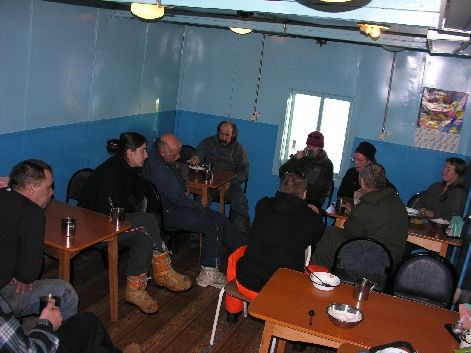 The science team all gathered in the dining room for a meeting to discuss the plan of the day.
The science team all gathered in the dining room for a meeting to discuss the plan of the day.
The major activity in the middle of the day was the scheduled helicopter flight... so the day shift did not go out to the rig. This was actually a good thing because the night shift ran out of drilling mud...(a special type of clay called bentonite is used to lubricate the drill hole) So in the morning many of the science team caught up on emails and paper work as we waited for the arrival of the helicopter. A little after Noon, the sound of the helicopter was heard in camp and we all went out to the heli-pad.
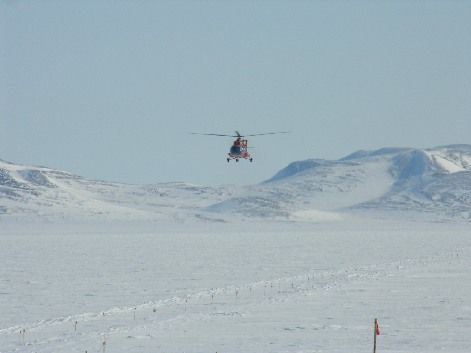 The helicopter prepares to land.
The helicopter prepares to land.
The flight brought several important things, new drillers (Jerry and Joe will replace Jim and John), and core boxes.
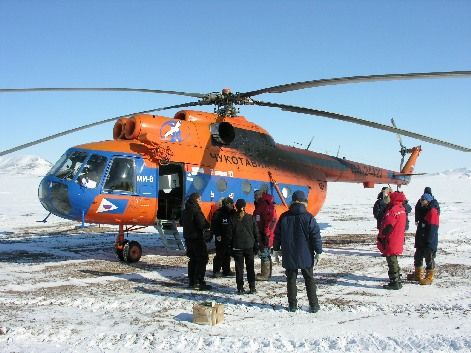 Joe and Jerry (the new drillers) meet other team members.
Joe and Jerry (the new drillers) meet other team members.
There were 22 insulated styrofoam boxes that needed to be unloaded from the helicopter, taken to the core laboratory, loaded with our valuable sediment cores, then taken back to the helicopter for the flight to Pevek. Even though the sediment core boxes are very heavy, (approximately 150 lbs) with all hands on deck, the job went quickly.
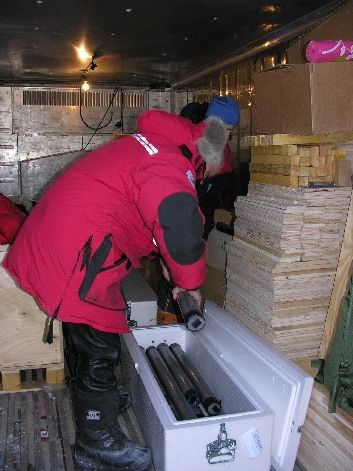 Grisha (our camp manager) helps packing sediment cores in insulated shipping containers.
Grisha (our camp manager) helps packing sediment cores in insulated shipping containers.
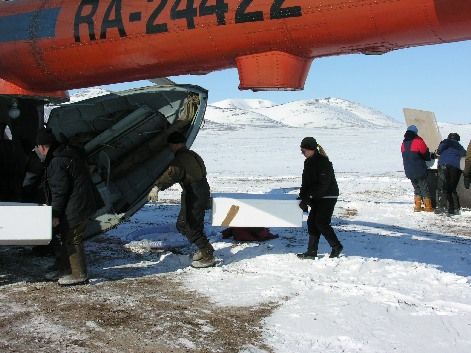 Julie and Zhenya load a box of sediment cores on to the helicopter.
Julie and Zhenya load a box of sediment cores on to the helicopter.
The helicopter was only on the ground for about 45 minutes.
After the helicopter left, the day shift ate a quick lunch before heading out to the drilling platform. The good news was that the drilling mud that arrived early this morning was delivered out to the drill site. The bad news is that the water pump hoses froze... the heater that goes down the hose was inadvertently un-plugged. So, as I write, the drillers and others are trying all means necessary to thaw the water hose which has frozen into the ice that is 2 meters thick. One of the many challenges of working in the Arctic!
While waiting on the hose to thaw, I worked with Volker Neth our ice engineer. Since additional drill pipe and the shipping container full of drilling mud were placed on the ice platform, it was important that we check the safety of the ice. After measuring the ice thickness and free board (the distance from the top of the ice to the lake water level), we were happy to report that the ice had thickened since the previous measurement and that the additional weight of the new supplies have not changed the free-board. The ice is safe to continue work.
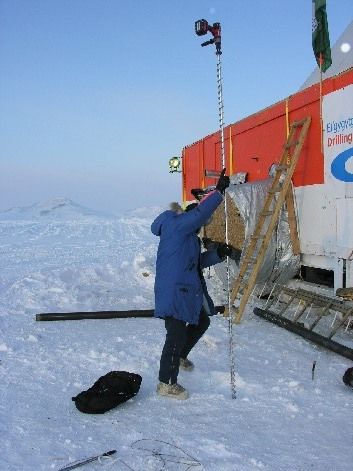 Volker Neth the ice engineer needed to use the 3 meter drill bit to drill through the ice!
Volker Neth the ice engineer needed to use the 3 meter drill bit to drill through the ice!
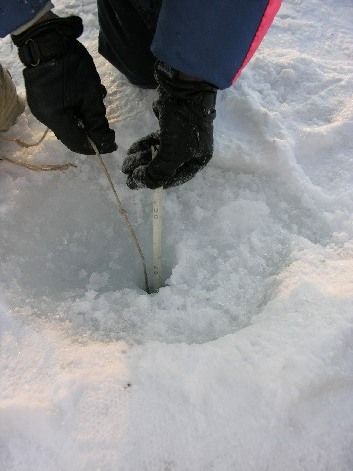 Measuring the thickness of the ice for safety.
Measuring the thickness of the ice for safety.
After checking the ice thickness, we checked the snow fences. As it turns out, the heaviest thing on the ice is ...snow! Some of the packed snow drifts are nearly 2 meters tall. We have constructed snow fences to cause the snow to drift and accumulate away from the drilling platform. These snow fences are working according to plan and we built a few additional fences today... The crew is still melting ice...but making progress
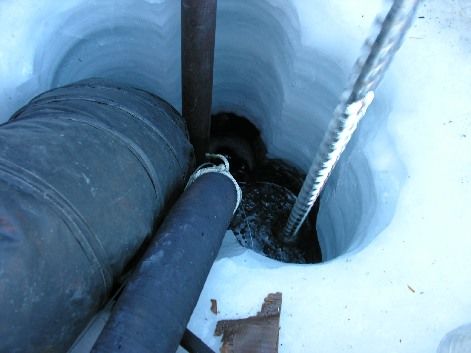 After the water pump hose froze we tried all sorts of ways to melt the ice.
After the water pump hose froze we tried all sorts of ways to melt the ice.
I think I will sleep well tonight, and I am looking forward to talking with many of you soon!
T-Mart...Staying warm in Siberia...

